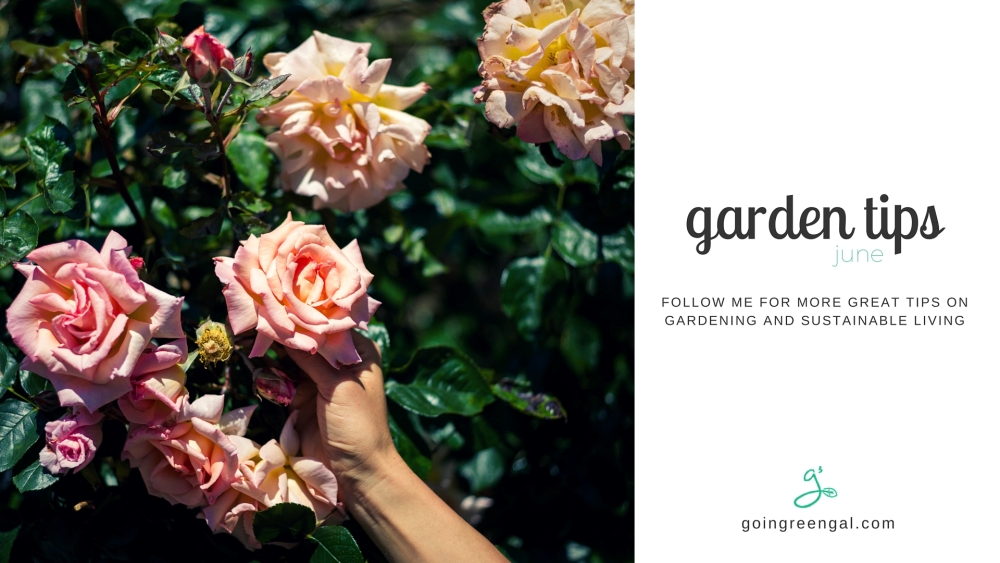Deadhead roses, salvias, dahlias, to encourage continual blooming. Remove spent buds from camellias, rhododendrons, and azaleas. Check your irrigation & mulch if you didn’t get around to inspecting your irrigation system or putting down that very important layer of mulch, it’s not too late. You definitely want to do to it before the summer heat sets in.
Check your irrigation & mulch if you didn’t get around to inspecting your irrigation system or putting down that very important layer of mulch, it’s not too late. You definitely want to do to it before the summer heat sets in.

Chill hours for fruit trees are essential for maximizing fruit production. Chill hours are calculated by adding up the hours during the fall and winter that are below 45°F. The number of chill hours determines the bud break, fruit set and fruit development. It is very important to select the proper varieties for your area, especially when planting sweet cherry, peach, apricot, nectarine and apple trees. Chill hours can range from four days (<100 hours) for persimmons to up to six to eight weeks for sweet cherries. Control earwigs which feed on soft plants can cause significant damage. They feed at night and hide in moist, tight spaces during the day. Trap them by setting out moistened, tightly rolled newspaper at night and then discard it in the morning.
Control earwigs which feed on soft plants can cause significant damage. They feed at night and hide in moist, tight spaces during the day. Trap them by setting out moistened, tightly rolled newspaper at night and then discard it in the morning. Fire Blight shows up in the spring. It causes blackened branches and twigs that look like they have been scorched. It often affects fruit trees such as apple, pear loquat, and quince; as well as toyons, hawthorns and crabapples. It is spread by insects, rain and pruning; if left unattended it can kill the tree. Prune the infected branch about 8-12 inches below the visible damage.
Fire Blight shows up in the spring. It causes blackened branches and twigs that look like they have been scorched. It often affects fruit trees such as apple, pear loquat, and quince; as well as toyons, hawthorns and crabapples. It is spread by insects, rain and pruning; if left unattended it can kill the tree. Prune the infected branch about 8-12 inches below the visible damage. Prune suckers from rose bushes. It can be difficult to tell the difference between suckers and basal canes. They both shoot straight up with vigorous growth. Suckers grow from below the bud union (the bump below where the rose bush starts to branch) and should be cut off at the point of origin. Sucker growth looks different from the rest of the plant; it is usually longer and more willowy. Basal canes originate at the bud union and should be left on – they are the best wood on the plant.
Prune suckers from rose bushes. It can be difficult to tell the difference between suckers and basal canes. They both shoot straight up with vigorous growth. Suckers grow from below the bud union (the bump below where the rose bush starts to branch) and should be cut off at the point of origin. Sucker growth looks different from the rest of the plant; it is usually longer and more willowy. Basal canes originate at the bud union and should be left on – they are the best wood on the plant.
Too much fruit? If you have an abundance of fruit and have already “over-shared” with you neighbors; contact Village Harvest. They offer volunteers that will pick your fruit and then donate it to a worthy food bank: http://www.villageharvest.org
For a complete list of June Gardening Tips, click on: http://www.mastergardeners.org/tips/june.html


 Being an avid gardener, born and raised in Indiana, I feel incredible blessed to live in sunny California & be able to grow my own food all year-round! I write a monthly garden column for the San Jose Mercury News & am constantly striving for tips & ideas on how to live a little more gently in regards to ourselves, our planet & each other – basically sustainability we can live with! As a
Being an avid gardener, born and raised in Indiana, I feel incredible blessed to live in sunny California & be able to grow my own food all year-round! I write a monthly garden column for the San Jose Mercury News & am constantly striving for tips & ideas on how to live a little more gently in regards to ourselves, our planet & each other – basically sustainability we can live with! As a 



